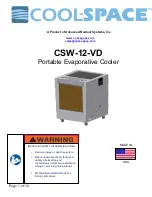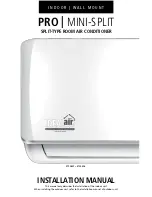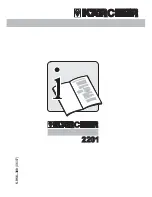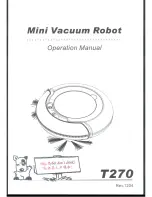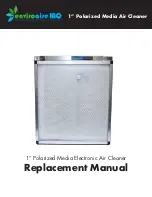
Page 11 of 16
MAINTENANCE
Algae/Bacterial Control
Control with chemicals.
Chlorine is the most
commonly used chemical to control organisms. It is
potentially dangerous and should be used with great
caution. One of the best methods to introduce chlorine
into the water circulation system is on the pressure side
of the pump on a continual or timed basis.
Note:
Consult water treatment experts before
attempting chemical water treatment. Neither media
manufacturers’
nor
equipment
manufacturers’
warranties cover damage due to chemical water
treatment and warranty may be voided when chemicals
are used.
Other chemicals suitable for organism control include
hydrogen peroxide, bromine based oxidizers, and other
commercial products. It is important to maintain a 6 to 9
pH level after treatment.
Control without chemicals.
With water, sunlight, and
nutrients, most organisms can survive. The water in the
media can be allowed to dry out and any organisms
living in the media will become dry and flaky. This can
then be flushed out at the next start up of the unit.
Shading the media will prevent the sunlight from
encouraging the growth of organisms.
Nutrients are
available from the air itself, however in some instances,
phosphates and fertilizers are carried in the air stream
and should be avoided.
Flushing the media with fresh water and dumping
the sump water periodically is the best preventative
measure that can be taken.
This flush and dump action will actually prevent alkali
deposits and algae/bacteria from growing. There are
also some non-recirculating water distribution systems
available that provide a constant flushing/dumping
action.
Water Chemistry
Hard water
contains relatively large amounts of
minerals, primarily calcium. A sample of water can
contain only a specific maximum amount of dissolved
solids in solution. If these concentrations increase
beyond a certain level, the excess minerals precipitate
out as a solid material. This precipitation will appear
as the familiar white residue left on the face of the
media. It is commonly referred to as alkali, calcium
depositions or salts. The same process occurs in the
desert when water collects in depressions and since
only pure water evaporates the minerals are left
behind. These are commonly referred to as “dry
lakes” or “salt flats”.
The build up of these minerals on the face of the
media does not because a problem until the airflow is
restricted. There is no easy way to remove these
deposits. The best solution to this problem is
preventive rather than corrective action and usually
requires simple actions such as media flushing with
fresh water and periodic dumping of the sump water.
Soft water
is on the opposite side of the scale for
water chemistry as compared to hard water.
Basically, removing or diluting the effects of the
calcium in the water creates soft water. Soft water is
not to be confused with pure water. Pure water does
not contain or contains very small amounts of
minerals found in either hard or soft water. While
hard water can leave deposits in the media, soft water
can cause harm to the media by leaching out the
rigidifying agents. Either water condition can have
some adverse effects on the media.
PH Range.
A pH range of 6 to 9 is the acceptable
range for the media, the closer to the center the
better. The re-circulating system of the water
distribution allows the mineral content in the sump
water to become more and more intensive because
the same water is re-circulating. The pure water is
lost to evaporation while the minerals just continue to
build up. TDS is the abbreviation for “Total Dissolved
Solids” and represents, as the name implies, a way of
identifying a measurement of the mineral content.
CHEMICAL BURN HAZARD
POISONOUS GAS HAZARD
•
Serious injury or death may
occur.
•
Read, understand and follow
all chemical manufacturers’
instructions when using the
chemicals noted in these
pages.

